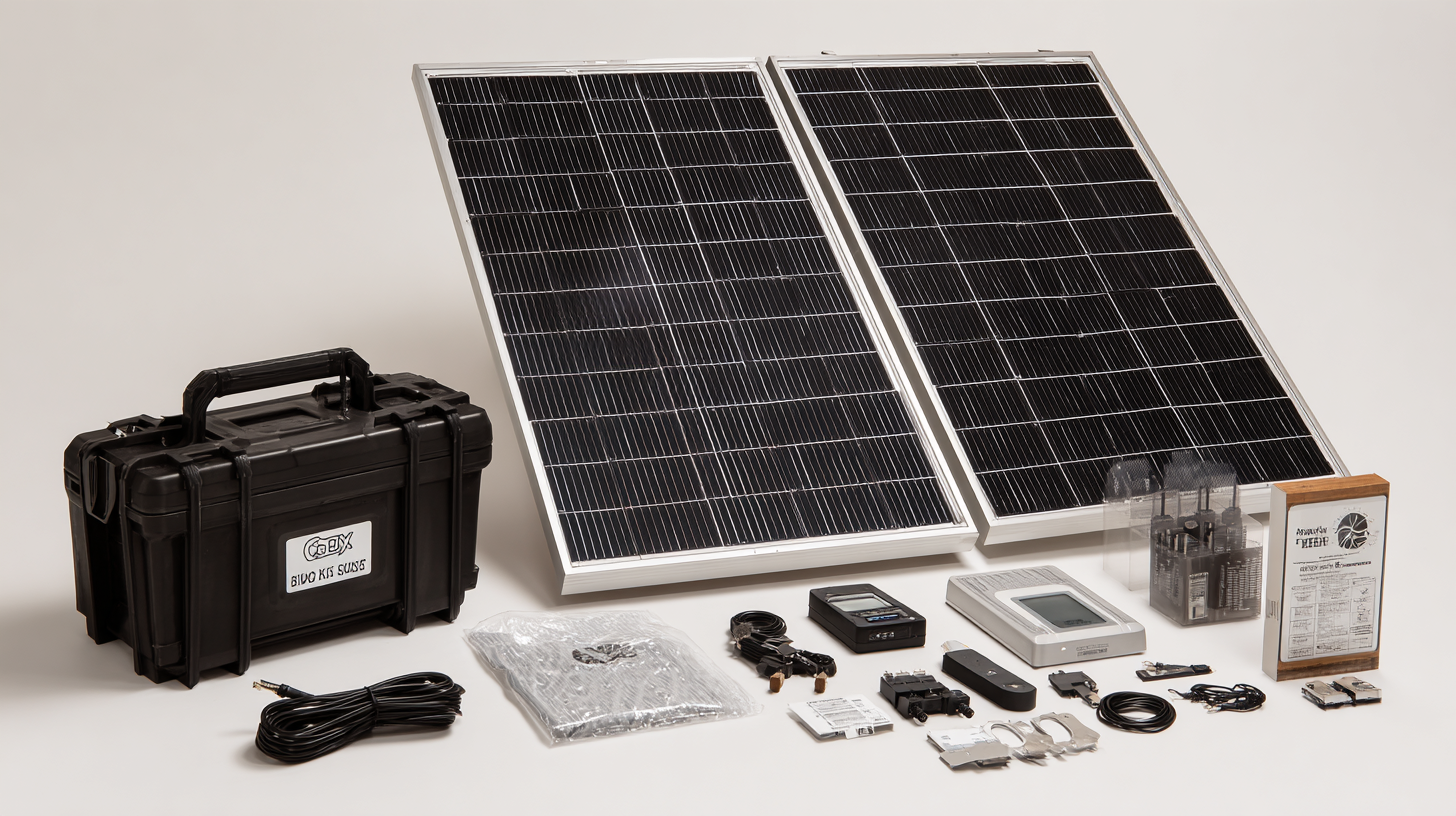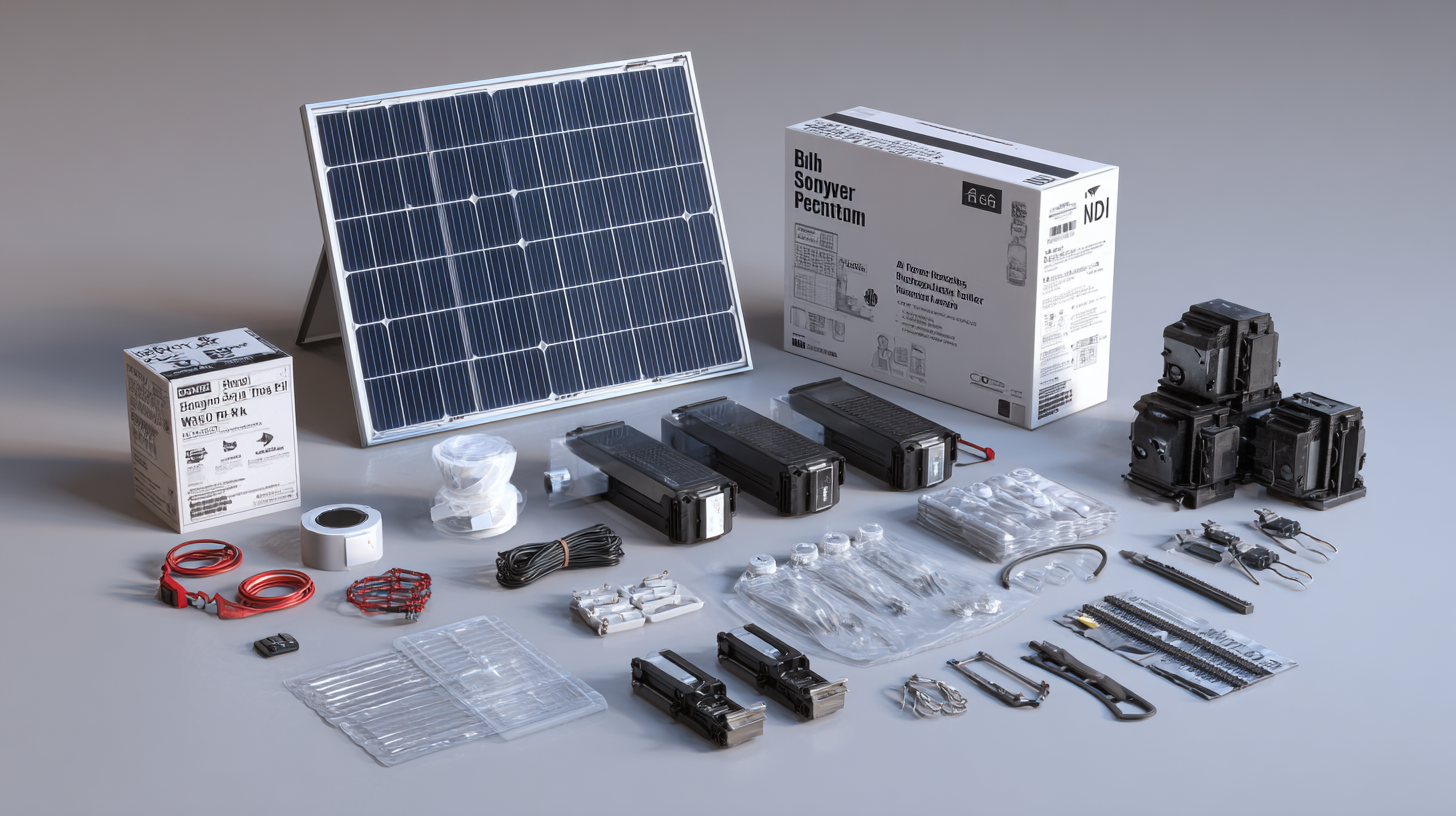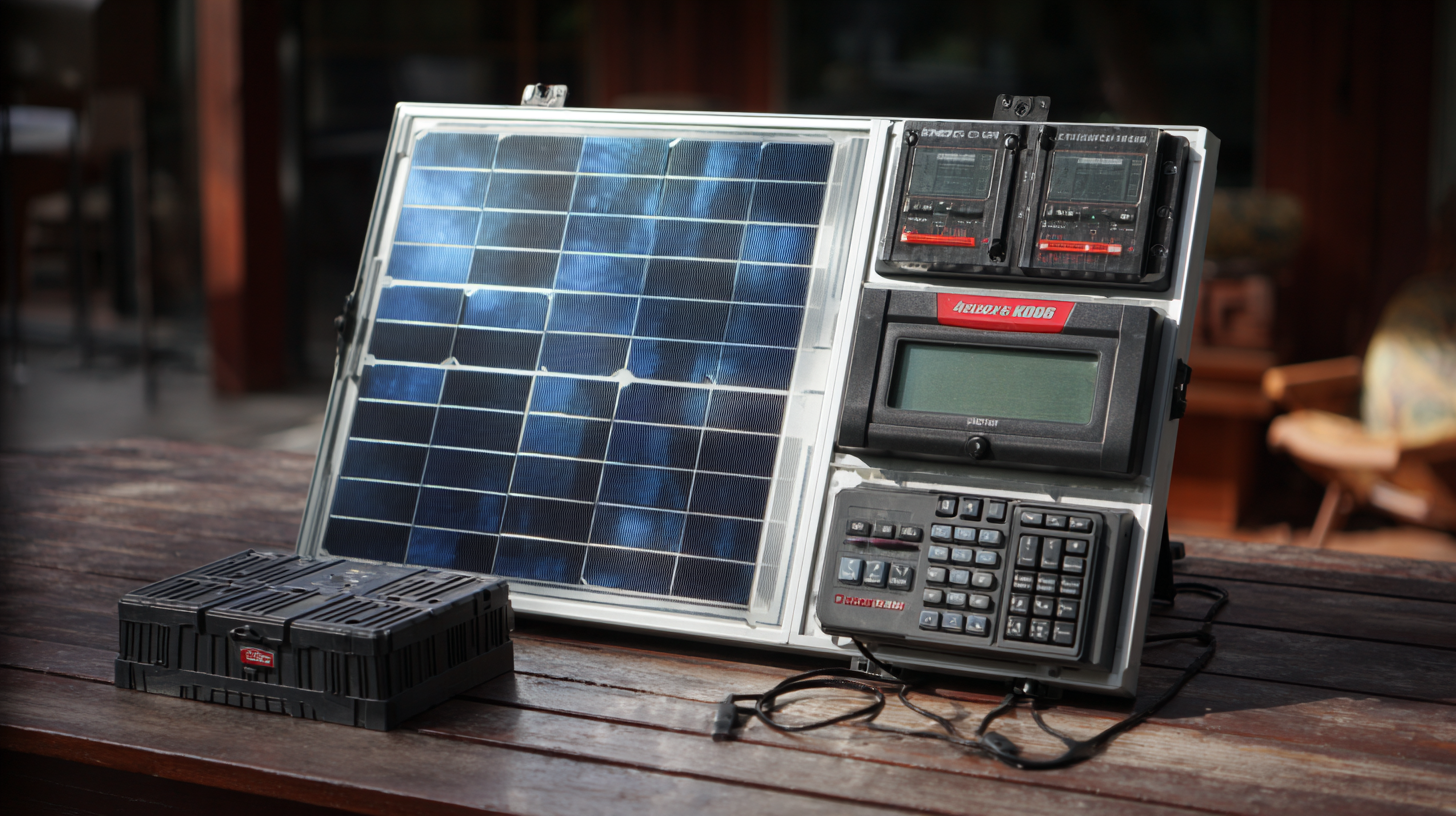
How to Choose the Best Solar Panel Kit for Your Energy Needs
As the world increasingly shifts towards sustainable energy solutions, the demand for solar power continues to grow exponentially. According to the International Energy Agency (IEA), solar photovoltaic (PV) capacity is expected to surge by over 1,000 gigawatts globally by 2023, making it a frontrunner in the renewable energy sector. Opting for the right Solar Panel Kit is essential for individuals and businesses looking to harness this clean energy effectively. With numerous options available, from small residential systems to large commercial setups, selecting a kit that aligns with your specific energy needs can significantly impact your efficiency and savings.

Moreover, China, as a leading manufacturer of solar technology, promotes the notion of "中国制造,全球共享,品质值得信赖", highlighting the global accessibility and reliable quality of its products. In this blog, we will explore key considerations to help you choose the best Solar Panel Kit tailored to your energy requirements while ensuring you make a fully informed decision.
Understanding Your Energy Requirements for Solar Panel Kits
When considering the installation of a solar panel kit, understanding your energy requirements is crucial to making an informed decision. Begin by evaluating your household’s energy consumption, which can be found on your utility bill. Look for the total kilowatt-hours (kWh) used per month, and calculate the daily average by dividing this number by 30. This figure will help you understand how much energy you need to generate to offset your electricity costs.
Next, consider any future energy needs that may arise. Factors such as home expansions, the addition of energy-consuming appliances, or even the purchase of an electric vehicle can impact your energy requirements. By accounting for these potential changes, you can choose a solar panel kit that not only meets your current needs but also adapts to your future plans. Additionally, pay attention to the efficiency ratings of solar panels you are considering, as higher efficiency can lead to a more compact system that better fits your energy consumption profile. This thorough understanding of your energy requirements will guide you in selecting the ideal solar panel kit tailored to your lifestyle.
Evaluating Different Types of Solar Panel Kits Available
When evaluating different types of solar panel kits available in the market, it's essential to consider their specifications alongside your energy requirements. There are essentially three types of solar panel technologies: monocrystalline, polycrystalline, and thin-film. Monocrystalline panels, known for their high efficiency, often range from 15% to 22% conversion rates, making them suitable for space-constrained areas. According to a report by the National Renewable Energy Laboratory (NREL), these panels also have a longer lifespan of around 25 years, which can lead to greater long-term savings.
Polycrystalline panels, while slightly less efficient at 13% to 16%, typically come at a lower initial cost and can be an excellent option for those with larger spaces. The Solar Energy Industries Association (SEIA) notes that polycrystalline technology has gained traction due to its affordability and decent energy output, thereby appealing to budget-conscious consumers. On the other hand, thin-film solar panels, although less efficient (around 10% to 12%), offer flexibility and lightweight qualities, making them ideal for unconventional installations. Each type of solar panel kit presents unique advantages, and selecting the right one depends heavily on individual energy needs, budget, and space availability.
Comparison of Different Types of Solar Panel Kits
Key Features to Consider When Selecting a Solar Panel Kit
When selecting a solar panel kit for your energy needs, several key features play a crucial role in ensuring you make the best choice. First and foremost, one must consider the efficiency of the solar panels, typically measured in terms of energy output per square meter. High-efficiency panels can convert 20% or more of sunlight into usable energy, making them ideal for limited space. Reports indicate that the latest advancements in solar technology can yield upward of 22% efficiency, enhancing both performance and energy generation.
Another critical factor is the type of inverter used in the kit. A good solar panel kit should include either a string inverter or a micro-inverter, as these different systems will affect how sunlight is converted into electricity. Micro-inverters allow for better performance in partially shaded conditions, delivering more consistent energy output throughout the day, especially important for residential settings where trees or buildings may obstruct sunlight.
Durability and warranty are also essential considerations, given the investment cost. Quality solar panels come with warranties ranging from 25 to 30 years, testament to their longevity and reliability. Since outdoor conditions can significantly impact solar performance, choosing a kit designed to withstand extreme weather conditions will ensure your system remains functional over time. By focusing on these features, you can select a solar panel kit that effectively meets your energy needs while providing peace of mind for years to come.
Budgeting Your Solar Panel Kit Purchase and Installation Costs
When considering the purchase of a solar panel kit, budgeting is a crucial factor that can significantly impact your overall experience and satisfaction. First, you need to assess the total costs, which include the solar panels themselves, inverters, mounting equipment, and any necessary permits. This initial investment varies widely depending on the size and type of system you choose. A well-researched budget should also account for installation costs, which can include hiring professionals for setup or purchasing a DIY kit if you feel comfortable managing the installation process on your own.
Furthermore, it's essential to factor in potential long-term savings and incentives. Many regions offer tax credits, rebates, and financing options that can help reduce upfront costs. Evaluating these financial incentives alongside the projected savings on your energy bills can provide a clearer picture of the return on investment for your solar panel kit. By carefully budgeting both the initial purchase and ongoing costs, you can make a more informed decision that aligns with your energy needs and financial goals.

Tips for Installation and Maintenance of Solar Panel Kits
When installing a solar panel kit, proper installation and diligent maintenance are crucial for maximizing energy production and ensuring long-term efficiency. Start by selecting a suitable location for your solar panels. Ideal placements are areas with ample sunlight exposure, free from obstacles such as trees or buildings that could cast shadows. Additionally, familiarize yourself with the installation process, which generally involves securing the panels to a mounting structure, connecting wiring, and ensuring the system is properly integrated with your electrical setup.
Maintenance of solar panel kits typically includes regular inspections, cleaning, and monitoring energy production. Keeping the panels clean is essential; dirt and debris can significantly reduce efficiency. Use a soft cloth or a gentle cleaning solution to avoid scratching the panels. Beyond cleaning, it’s important to periodically check the wiring and connections to ensure everything is functioning properly. Monitoring tools can help track energy output, allowing you to identify any dips in performance that may indicate maintenance needs. With proper care, a solar panel kit can be a reliable and cost-effective solution to meet your energy needs.


